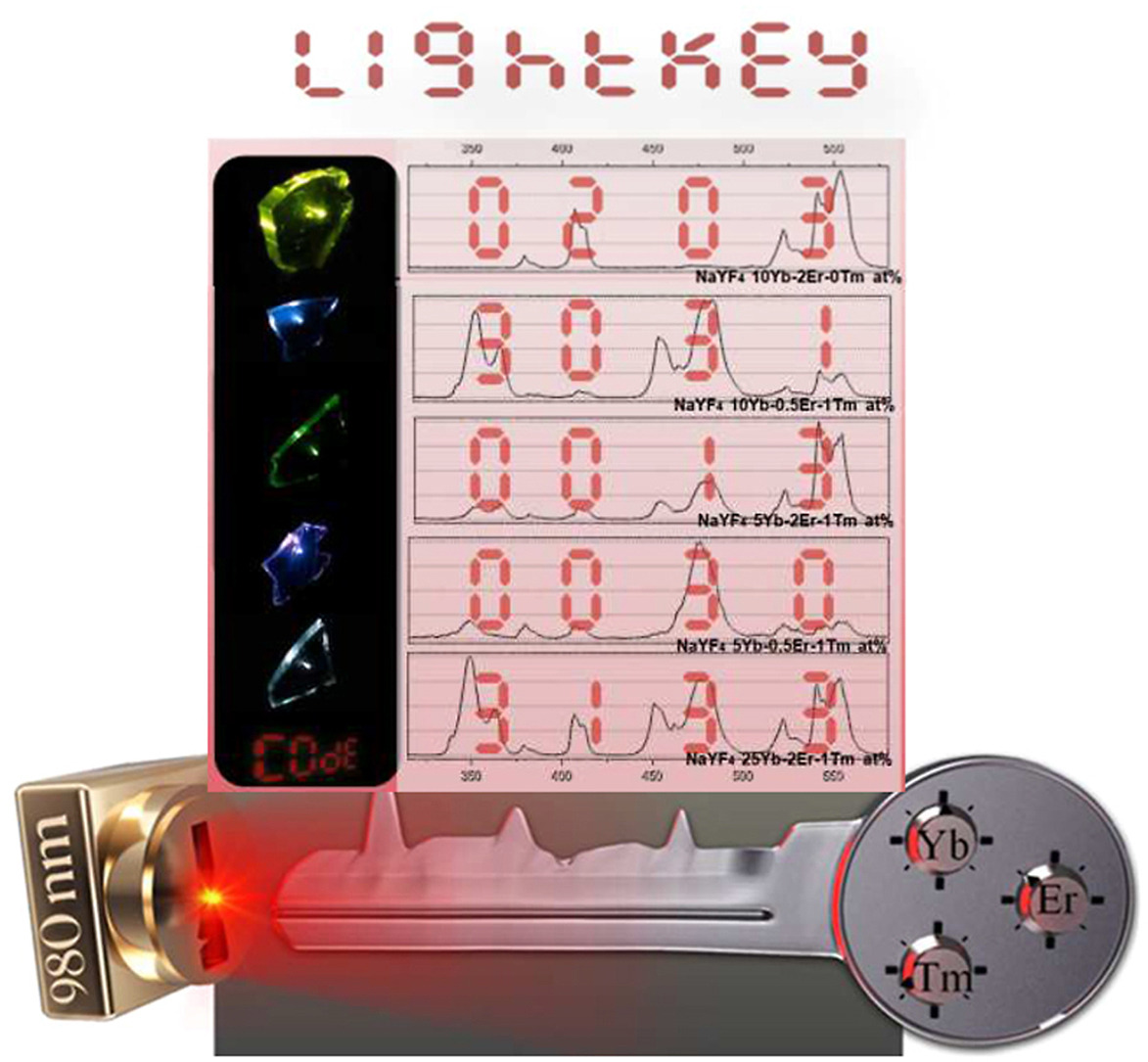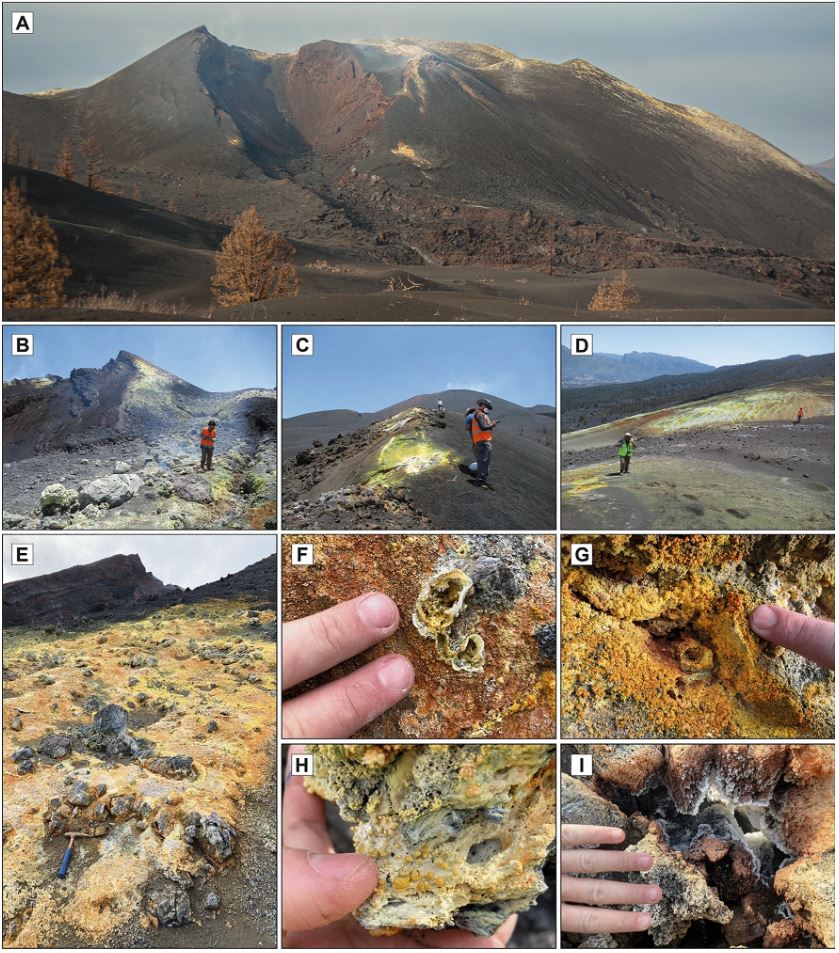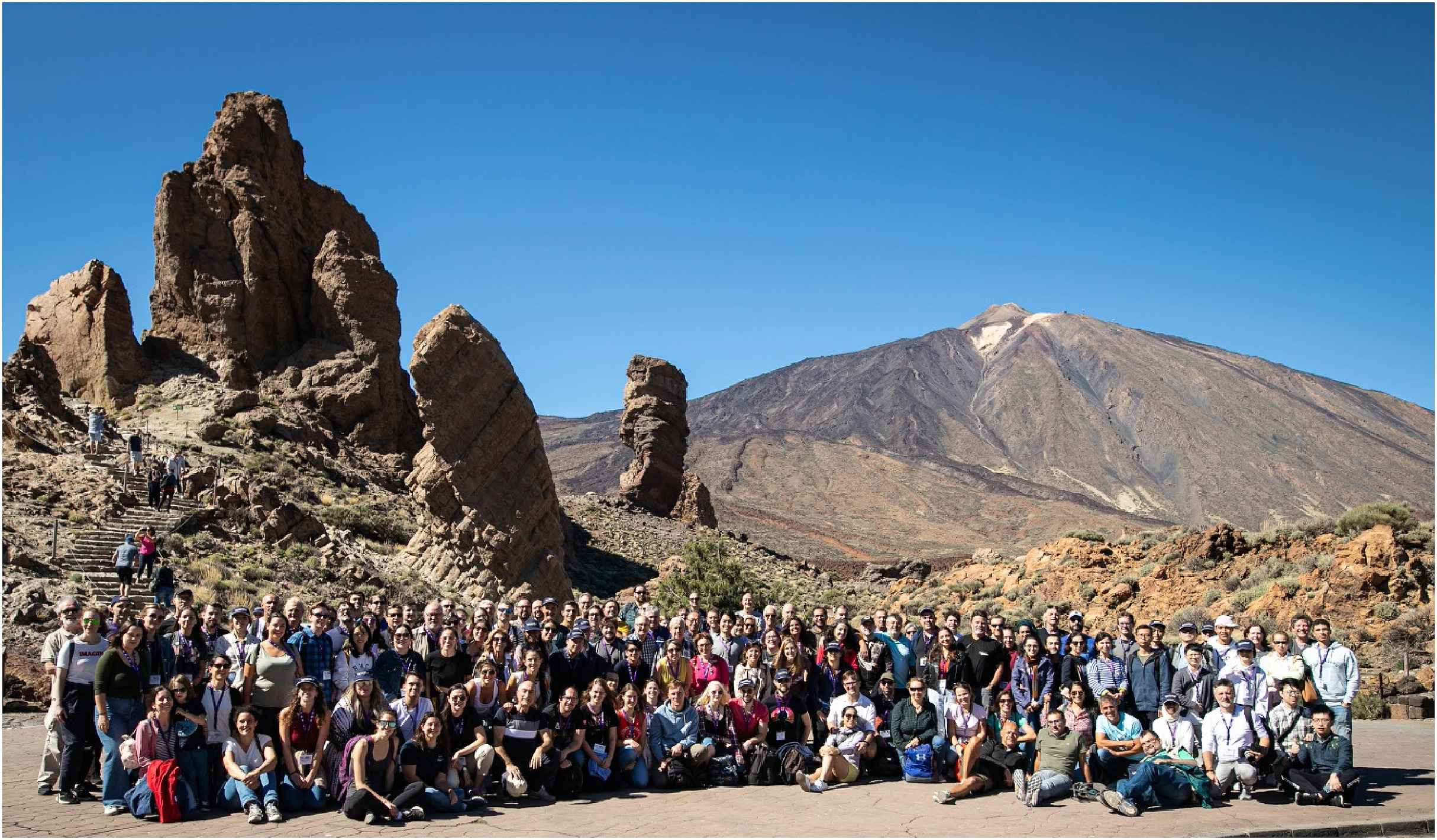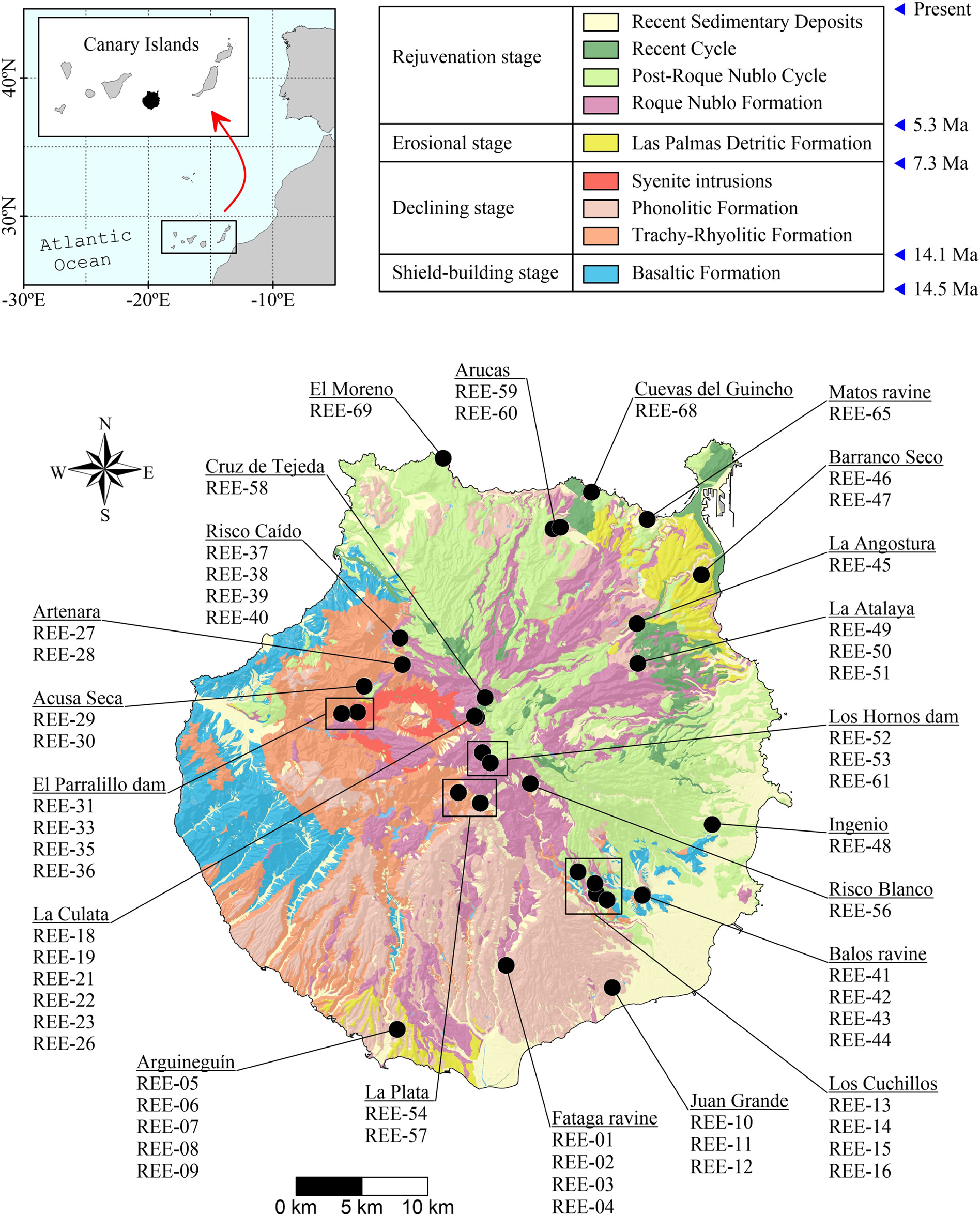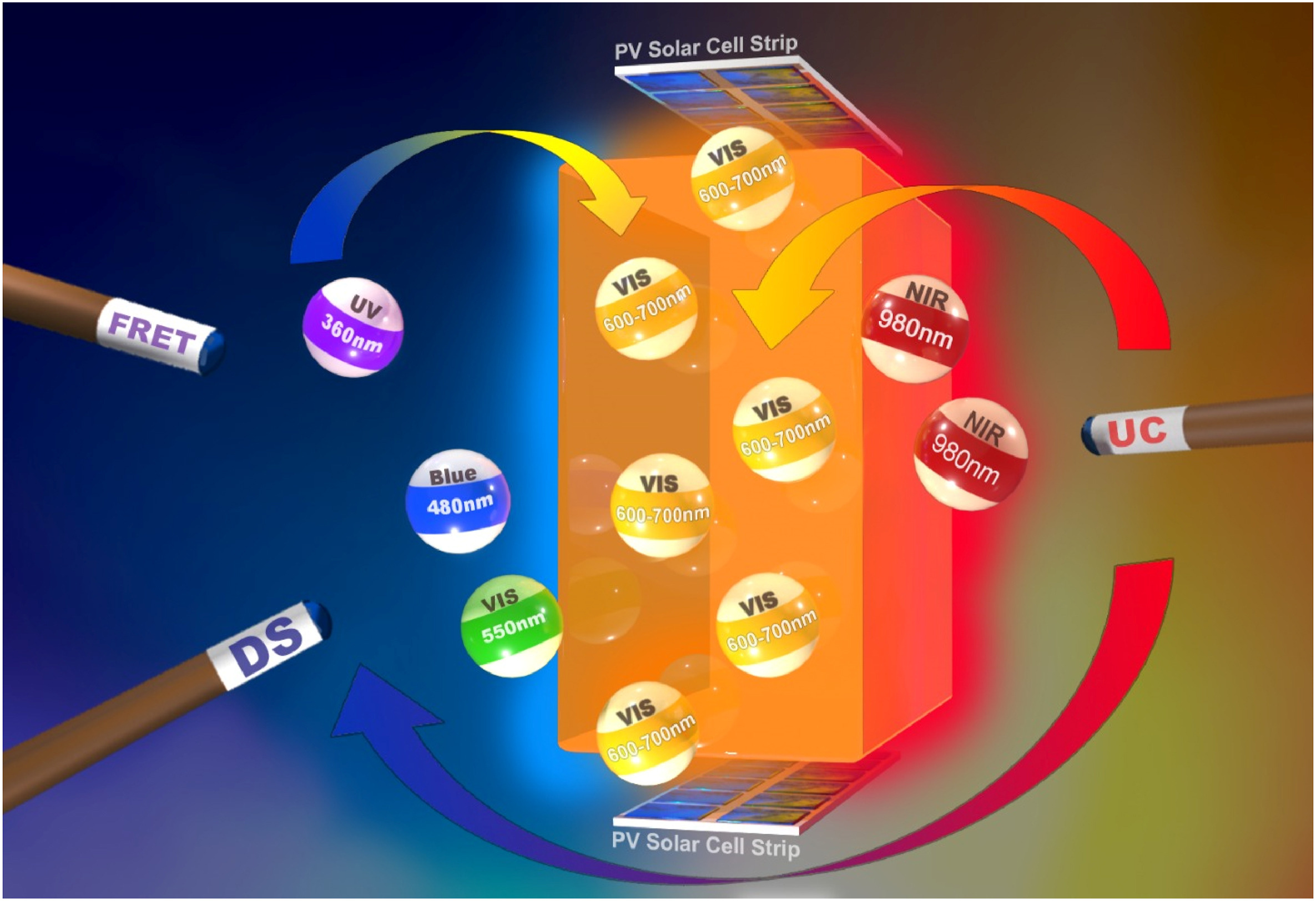
Towards a luminescent solar concentrator with ultra-broadband absorption and spectral conversion for optimizing photovoltaic solar cell response: “The photonic cannon shot”
Solar energy harvesting is largely limited by the spectral sensitivity of the employed photovoltaic solar cell, since typically the full potential of each photon of the whole solar spectrum is not efficiently used in the generation of electricity. Therefore, increasing the overall solar spectrum utilization is of crucial interest and stands up as a frontier-of-research approach in the photovoltaic sector. Here we present an innovative ultra-broadband absorption and multiple spectral conversion approach, by means of rare-earth doped materials together with organic dyes embedded in a luminescent solar concentrator. The combination of different luminescent materials is a key factor for improving energy harvesting over the whole solar spectrum. At the same time, a simultaneously combined effect of up-conversion and down-shifting of light is aimed to optimal spectral matching with amorphous silicon solar cells response. Thus, UV–visible photons coming from the incoming sunlight, together with UV–visible up-converted photons coming from near-infrared radiation, can be all shifted to the yellow-orange-red part of the spectrum. To the best of our knowledge, this represents the first reported proof-of-concept using LSCs with up-conversion and down-shifting photonic processes working together and sequentially.
- 01 Aug 2023
